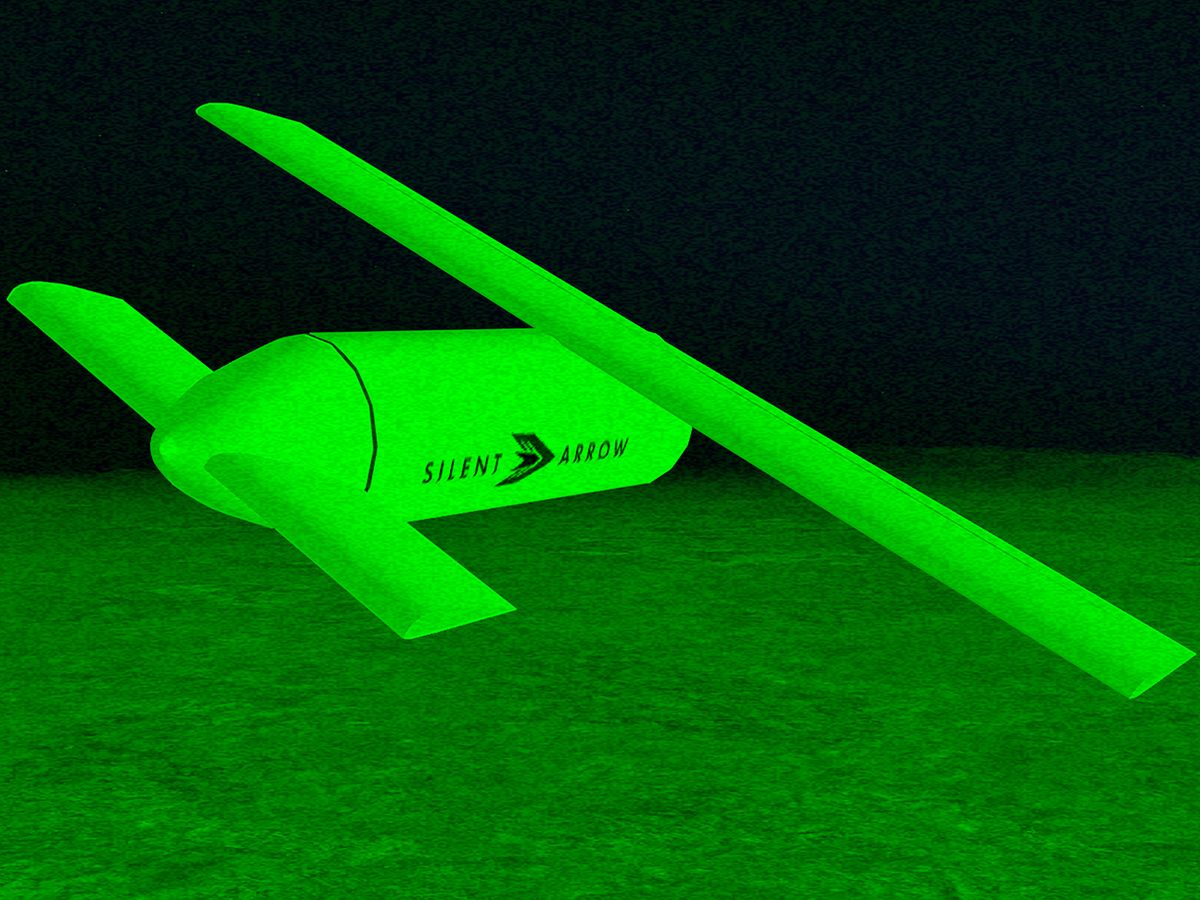A US $5,000 fee may sound like a steep price to pay for most ordinary deliveries. But it’s a price the U.S. Marine Corps Warfighting Laboratory would gladly pay for a disposable glider drone that could deliver 320 kilograms (700 pounds) of supplies to ground troops at remote outposts or in the middle of a warzone. Earlier this month, the Marines awarded a contract to kickstart the second phase of flight testing for such battlefield delivery drones.
The recent contract given to the Yates Electrospace Corporation aims for flight tests to refine the design and construction of the company’s “Silent Arrow” glider drones that resemble sleek missiles with extendable wings.
The ultimate goal of the Marine Corps Warfighting Laboratory’s TACtical Air Delivery (TACAD) program is to develop a disposable glider drone that can deliver the 320-kilogram payload to within 45 meters of any given target site on Earth—and for a price that could make military resupply costs at least 10 times cheaper.
“In some cases, Silent Arrow may be replacing resupply by ground vehicle convoy, and in some cases by parachute drop,” says Chip Yates, founder and CEO of the Yates Electrospace Corporation. “We have seen a number of drone delivery concepts and ideas that use quad-rotors limited to less than 10 pounds [4.5 kilograms] of payload, but have not encountered any other legitimate, funded air delivery capability that achieves this level of performance for the price point of Silent Arrow.”
Such precise aerial resupply offers huge advantages over truck convoys that could come under attack from insurgents or fall prey to the roadside bombs that have proven deadly to U.S. troops in Iraq and Afghanistan. The glider drones could be dropped by piloted military transport aircraft such as the MV-22 Osprey or the C-130 Hercules at maximum ranges between 60 and 115 kilometers (38 and 71 miles) away from the final destination, depending on the altitude at the point of release.
The goal is for each single-use, disposable glider drone to achieve a per unit cost of significantly less than $10,000, and possibly even less than $5,000 if the Silent Arrow drones reach mass production, Yates explained. When packed up, the Silent Arrow drones can fit inside a box that is 2.5 meters long, 0.6 meters wide and 0.6 meters high. That means they can easily be transported across oceans inside standard shipping containers to reach the U.S. military’s fields of operation.
By comparison, the U.S. military’s current option for precise aerial resupply is the Joint Precision Airdrop System (JPADS), a reusable GPS-guided parafoil system that cost $29,700 per unit when the U.S. Army deployed them in Afghanistan in 2011. The JPADS robo-parachutes have a shorter range than the Silent Arrow glider drone prototypes and require U.S. troops to recover them because of their cost and to avoid having them fall into enemy hands.
Phase 2 flight testing for glider drones in the TACAD program should begin sometime in either February or March of 2018, says Lieutenant Morgan Grossman, aviation project officer for the Air Combat Element Branch at the Marine Corps Warfighting Laboratory.
The Yates Electrospace Corporation contract calls for 10 Silent Arrow prototypes to undergo flight trials such as surviving the impact of a water landing, undergoing flight control and autopilot testing, and going through both tow testing and drop testing for improved gliding and flight performance.

But the Silent Arrow drones are not the only competitors in the glider drone trials. The Marine Corps Warfighting Laboratory has also been testing a different glider drone design developed by Logistic Gliders. Unlike the sleek design of the Silent Arrow drones, the Logistic Gliders drones resemble boxy cargo containers that have sprouted wings and a tail. Both glider drone types will be put to the test during the 12-month contract for phase 2.
The U.S. military may not be the only beneficiary of such glider drones in the future. Yates Electrospace Corporation also envisions using Silent Arrow drones to provide swift and precise aerial resupply in the wake of natural disasters such as hurricanes, tornados, and floods—a capability that could have proven quite useful in Puerto Rico and other hurricane-stricken regions this year. The civilian version of Silent Arrow could also assist with humanitarian efforts such as delivering medicine to remote parts of African countries.
Jeremy Hsu has been working as a science and technology journalist in New York City since 2008. He has written on subjects as diverse as supercomputing and wearable electronics for IEEE Spectrum. When he’s not trying to wrap his head around the latest quantum computing news for Spectrum, he also contributes to a variety of publications such as Scientific American, Discover, Popular Science, and others. He is a graduate of New York University’s Science, Health & Environmental Reporting Program.



